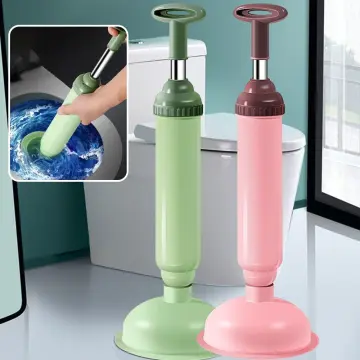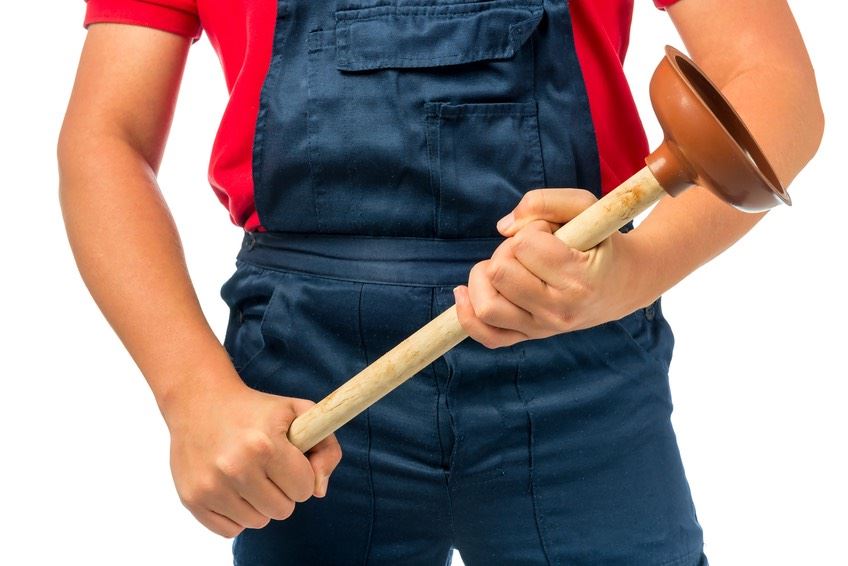Utilizing Plungers and Drain Cleaners: Professional Tips
Utilizing Plungers and Drain Cleaners: Professional Tips
Blog Article
Just about every person has got their own individual opinion on the subject of Tips on How to Effectively Use a Plunger.

Intro
Appropriate maintenance of house drains is vital for preventing blockages and guaranteeing smooth water circulation. Among the trick tools in every home owner's toolkit is the plunger, together with numerous drain cleaners made to tackle stubborn blockages successfully. This write-up discovers how to make use of bettors and drain cleaners efficiently to maintain your drains pipes streaming easily.
Section 1: Comprehending Plungers
Types of Plungers
There are numerous sorts of bettors offered, each developed for various kinds of drains pipes and obstructs. The most typical types consist of mug plungers, flange bettors, and accordion bettors.
How Plungers Work
Bettors work on the principle of creating stress and suction to displace clogs. When appropriately used over a drain, they produce a vacuum that can take out debris or separate blockages.
Selecting the Right Bettor
Selecting the ideal bettor depends upon the sort of drain and the nature of the obstruction. Cup plungers are perfect for sinks and bathtubs, while flange bettors are much better fit for commodes due to their style.
Typical Errors with Bettors
Staying clear of these mistakes makes sure efficient plunging: inappropriate seal around the drainpipe, not enough pressure, and unclear bordering particles.
Area 2: Utilizing Plungers Successfully
Prep work
Before plunging, guarantee the plunger covers the drain entirely and forms a limited seal. Clear any kind of noticeable particles around the drain opening.
Technique
Beginning with mild plunging activities to develop suction. Increase stress progressively, making use of a consistent rhythm. Repeat as required till the drain clears.
Fixing Tips
If plunging does not work, try adjusting the seal, applying oil jelly for a much better seal, or making use of a different kind of bettor.
Section 3: Recognizing Drain Cleaners
Kinds Of Drain Cleansers
Drain cleansers can be chemical or enzymatic. Chemical cleaners use strong chemicals to liquify obstructions, while enzymatic cleaners utilize all-natural enzymes to break down raw material.
Just How Drain Cleaners Work
Chemical cleaners react with blockages to dissolve them, while enzymatic cleaners break down organic materials like hair and grease without harming pipes.
Safety Considerations
Always put on handwear covers and eye defense when making use of chemical drainpipe cleaners. Make sure appropriate air flow and adhere to producer instructions very carefully.
Eco-Friendly Alternatives
Think about utilizing vinegar and baking soda or enzyme-based cleaners for environmentally friendly options that are more secure for pipelines and the atmosphere.
Area 4: Using Drainpipe Cleaners Efficiently
Application Techniques
Pour chemical cleansers straight right into the drain opening. Permit them to help the recommended time before purging with warm water. Enzymatic cleaners must sit overnight.
Precautions
Stay clear of blending different kinds of cleaners, as this can create toxic fumes. Never utilize chemical cleansers together with a bettor, as spilling can take place.
Handling Persistent Obstructions
For relentless obstructions, take into consideration making use of a plumbing snake or calling a professional plumbing to prevent damage to pipes.
Final thought
In conclusion, understanding just how to use plungers and drainpipe cleaners efficiently is vital for preserving healthy pipes systems. By choosing the right devices and techniques, home owners can deal with small blockages and prevent significant plumbing problems down the line.
How To Properly Use A Plumbing Snake To Clear Drains
When any drain clogs in our home arise, we tend to gravitate toward the plunger and little else. In cases where the plunger and its vacuum-created pressure are not able to clear clogs, many immediately move to harmful chemicals or simply call their plumber to fix the issue.
we’re happy to help with all drain cleaning needs and concerns. This includes informing you on a few other home remedies you may have at your disposal for minor to moderate clogs, one of which is the use of a plumbing snake. Many people have never used one of these before – let’s go over the steps to take when your drain clogs and you have a plumbing snake available.
Attempt Plunger Use
The first step here, as we noted above, should indeed be to grab your plunger when you notice a drain clog and attempt to resolve it this way. If you’re unsure how to use a particular type of plunger, our plumbers can answer any questions you have. If this doesn’t do the trick, however, you move on to the snake.
Locate And Prepare Snake
A plumbing snake is a metal or plastic device that’s generally about a quarter of an inch thick. It’s design with significant extensions, meant to reach down into your clogged drain and push the clog out. Snakes also contain drain augers that will latch onto and push stubborn blockages.
If your plunger doesn’t clear a clog, locate your snake and bring it to the drain in question. We also recommend keeping a bucket nearby to collect the clog once you pull it out, plus we’d advise wearing goggles and possibly protective gloves.
Feed Snake
Once you’re ready to go, feed the snake slowly down the drain, using the crank device it comes with to keep it moving until it finds the clog. Once this happens, much of the clog will be latched onto the coil so you can pull it out, while the rest will simply break up and flow downward.
Detach Debris
Remove the snake slowly from the drain, and once you’ve done so, pick off any debris that’s stuck to the coil. This is another area where wearing gloves is a must.
Flush Drain
Finally, take a few minutes to ensure the snake has done its job correctly. If you’ve been using it on a toilet, flush the toilet a couple times and make sure everything flows well. If you’ve used it on a different drain, flush it with some room temperature water.
https://www.mybuddytheplumber.com/blog/how-to-properly-use-a-plumbing-snake-to-clear-drains/

Application Techniques
Pour chemical cleansers straight right into the drain opening. Permit them to help the recommended time before purging with warm water. Enzymatic cleaners must sit overnight.
Precautions
Stay clear of blending different kinds of cleaners, as this can create toxic fumes. Never utilize chemical cleansers together with a bettor, as spilling can take place.
Handling Persistent Obstructions
For relentless obstructions, take into consideration making use of a plumbing snake or calling a professional plumbing to prevent damage to pipes.
Final thought
In conclusion, understanding just how to use plungers and drainpipe cleaners efficiently is vital for preserving healthy pipes systems. By choosing the right devices and techniques, home owners can deal with small blockages and prevent significant plumbing problems down the line.
How To Properly Use A Plumbing Snake To Clear Drains
When any drain clogs in our home arise, we tend to gravitate toward the plunger and little else. In cases where the plunger and its vacuum-created pressure are not able to clear clogs, many immediately move to harmful chemicals or simply call their plumber to fix the issue.
we’re happy to help with all drain cleaning needs and concerns. This includes informing you on a few other home remedies you may have at your disposal for minor to moderate clogs, one of which is the use of a plumbing snake. Many people have never used one of these before – let’s go over the steps to take when your drain clogs and you have a plumbing snake available.
Attempt Plunger Use
The first step here, as we noted above, should indeed be to grab your plunger when you notice a drain clog and attempt to resolve it this way. If you’re unsure how to use a particular type of plunger, our plumbers can answer any questions you have. If this doesn’t do the trick, however, you move on to the snake.
Locate And Prepare Snake
A plumbing snake is a metal or plastic device that’s generally about a quarter of an inch thick. It’s design with significant extensions, meant to reach down into your clogged drain and push the clog out. Snakes also contain drain augers that will latch onto and push stubborn blockages.
If your plunger doesn’t clear a clog, locate your snake and bring it to the drain in question. We also recommend keeping a bucket nearby to collect the clog once you pull it out, plus we’d advise wearing goggles and possibly protective gloves.
Feed Snake
Once you’re ready to go, feed the snake slowly down the drain, using the crank device it comes with to keep it moving until it finds the clog. Once this happens, much of the clog will be latched onto the coil so you can pull it out, while the rest will simply break up and flow downward.
Detach Debris
Remove the snake slowly from the drain, and once you’ve done so, pick off any debris that’s stuck to the coil. This is another area where wearing gloves is a must.
Flush Drain
Finally, take a few minutes to ensure the snake has done its job correctly. If you’ve been using it on a toilet, flush the toilet a couple times and make sure everything flows well. If you’ve used it on a different drain, flush it with some room temperature water.
https://www.mybuddytheplumber.com/blog/how-to-properly-use-a-plumbing-snake-to-clear-drains/

Hopefully you enjoyed reading our part about . Thank you so much for taking a few minutes to read our post. If you enjoyed reading our page please be sure to share it. Thank you so much for your time spent reading it.
See Availability Report this page